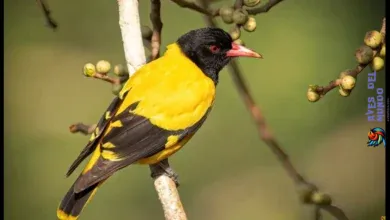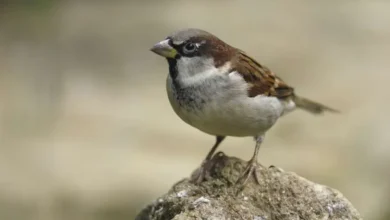Have you ever wondered about the incredible diversity of birds and what makes each species unique? From their varied behaviors and adaptations to their distinct physical features, birds captivate us with their remarkable traits. In this article, we will take a closer look at the different types of birds and explore their fascinating characteristics. Prepare to embark on a journey of discovery as we delve into their behaviors, adaptations, and the incredible variations that exist within the avian world.
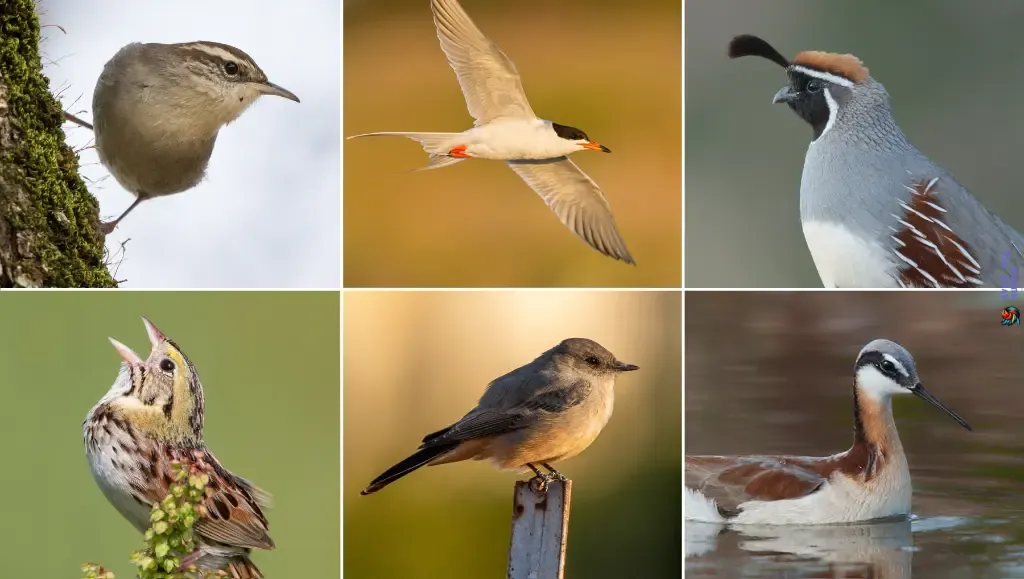
Let’s begin by unraveling the mysteries behind the classifications of bird species. Can you guess how many different kinds of birds exist? And how are they categorized? Join us as we unravel the secrets of the avian world and explore the traits that make each species truly remarkable.
Classifying Birds: Understanding Avian Variations
Birds belong to the class Aves and display incredible diversity in terms of species. Understanding the classification of avian species is essential for identifying and differentiating between them. Let’s explore the different categories and characteristics that help us classify and appreciate the vast array of bird species.
The Classification of Bird Species
Avian species can be classified into various categories based on their shared characteristics and traits. Here are some common classifications:
- Order: Birds are classified into different orders, such as Passeriformes (songbirds), Strigiformes (owls), and Falconiformes (birds of prey).
- Family: Within each order, birds are further grouped into families. For example, within the order Passeriformes, we have families like Cardinalidae (cardinals) and Fringillidae (finches).
These classifications help scientists and bird enthusiasts alike understand the relationships between different bird species and identify common traits within each group.
Characteristics of Bird Species
Each bird species possesses unique characteristics and adaptations that enable it to thrive in its specific environment. These characteristics include:
- Physical Features: Birds vary in size, shape, plumage, beak structure, and wing design, which are influenced by their habitat and diet.
- Songs and Calls: Birds have distinct vocalizations, with different species producing a variety of songs and calls to communicate, attract mates, and defend territories.
- Migratory Behavior: Some bird species undertake remarkable migratory journeys, traveling thousands of miles to find suitable breeding and feeding grounds.
- Feeding Habits: Birds have diverse dietary preferences, including insectivorous, frugivorous, nectarivorous, and carnivorous feeding habits.
Understanding these characteristics allows us to appreciate the remarkable adaptations and behaviors exhibited by each bird species in their quest for survival.
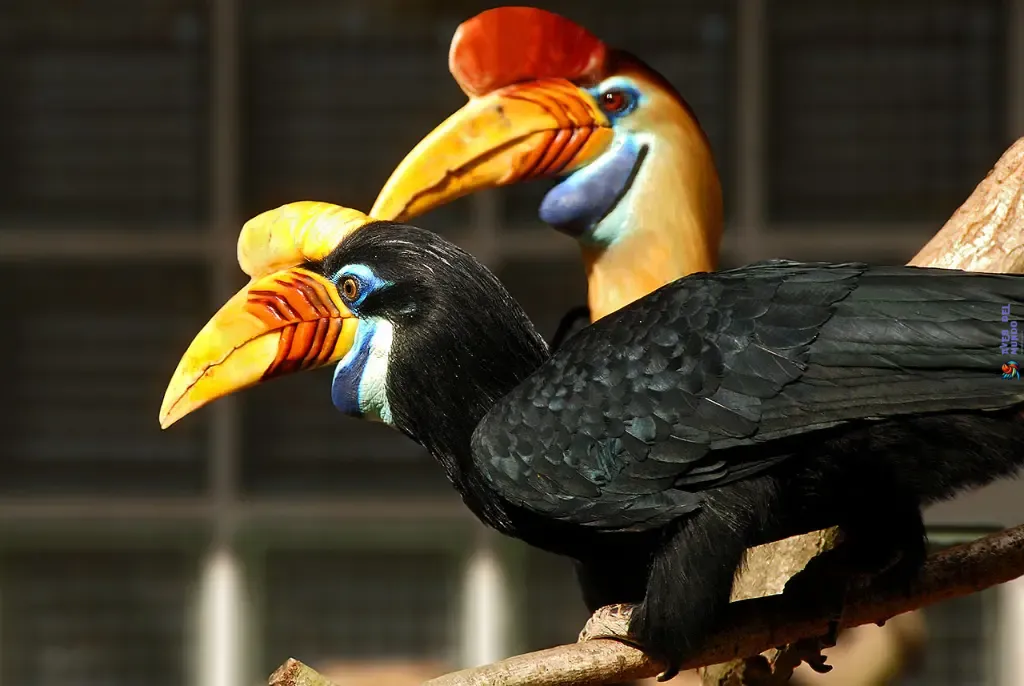
Common Bird Terms and Their Meanings
As you delve deeper into bird terminology, you’ll find words that offer unique perspectives on nature. Let’s explore common terms that will immerse you in the world of birds.
- Altricial: referring to birds that are born in an underdeveloped state and need care and feeding from the parents.
- Brood: a family of young birds that hatch at the same time.
- Carrion: the decaying flesh of dead animals; many birds, such as vultures, are scavengers.
- Dimorphism: when males and females of the same species have different physical characteristics.
- Fledge: The stage when a young bird develops feathers and wings for flight.
- Gizzard: a specialized stomach built of muscular walls; used to grind food.
- Cyanosis: A bluish discoloration of the skin, especially on a bird’s feet, indicating a lack of oxygen.
- Molt: The process by which birds lose old feathers to replace them with new ones.
- Monogamous: Birds that mate with only one partner per season or often per life.
- Polygamous: Birds that have multiple mating partners in one breeding season.
- Roost: the place where birds rest or sleep.
- Territory: An area defended by a bird or pair, especially during the breeding season.
Now, equipped with these bird-related terms, your language palette has been enriched. Understanding these words can also give you a new appreciation for nature during your outdoor getaways. As you continue your journey through language, let these bird terms inspire deeper connections with the natural world.
Common types of birds
Birds are a diverse group of creatures, each possessing their own unique set of characteristics and attributes. From the vast plains of Africa to the bustling cities of the world, these avian wonders grace our skies, waterways and lands. Their colors, habits and sizes provide endless fascination and wonder to casual observers and ornithologists alike.
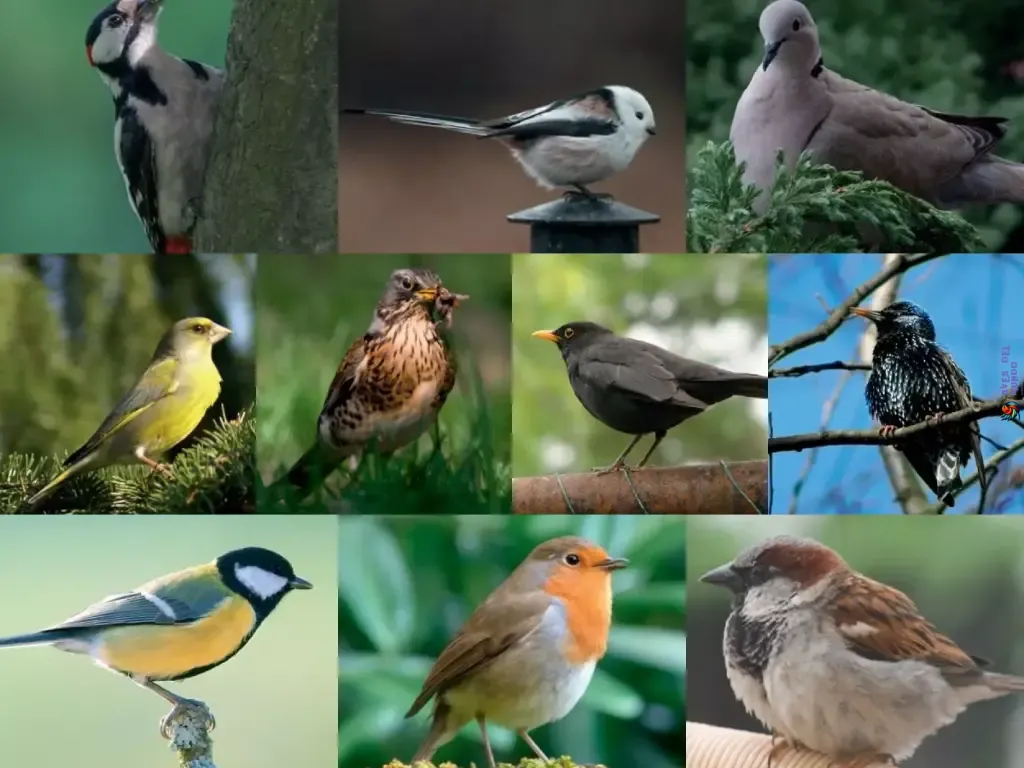
- Robin: medium-sized songbird with a round body, bright red-orange breast, and brown upperparts; common in gardens and forests.
- Penguin: flightless seabird with a black back and white belly, known for its wobbly gait; native to colder southern regions.
- Peacock: Large, colorful bird known for its iridescent tail feathers that fan out; males display them to attract females.
- Flamingo: tall wading bird with pink or reddish feathers, long neck, and long, thin legs; He is often seen standing on one leg.
- Eagle: large bird of prey with sharp talons and curved beak; Known for its keen vision and powerful flight.
- Ostrich – the largest living, flightless bird with long legs and a long neck; native to Africa.
- Hummingbird: tiny, iridescent bird, with rapid flapping of its wings, which allows it to float; It feeds on nectar with its long, thin beak.
- Parrot: brightly colored bird, known for its curved beak and ability to imitate sounds; native to tropical regions.
- Owl: nocturnal bird of prey with a round face, large eyes and curved beak; Known for its silent flight.
- Swan: large and elegant aquatic bird, with a long neck and all white or black plumage; associated with lakes and ponds.
- Toucan: tropical bird with a large, colorful, curved beak; predominantly fruit eaters.
- Pelican: large water bird with a distinctive pouch under its beak, used to catch fish.
- Falcon: bird of prey known for its speed and agility in the air; often used in falconry.
- Sparrow: small grayish-brown bird, often found in gardens and urban environments; happy and social.
- Albatross: Large seabird known for its wide wingspan and ability to glide over the ocean for hours.
- Woodpecker: bird known for pecking at tree trunks to find insects; It typically has a strong bill and vibrant coloration.
- Pigeon: often a stocky gray bird; commonly found in urban areas around the world.
- Kingfisher: small to medium-sized bird with bright plumage, often blue or green; known for diving into the water to catch fish.
- Hawk: medium to large bird of prey with sharp talons; known to fly high in the sky or perch silently before swooping down on its prey.
- Crow: large all-black bird with a strong beak; intelligent and often found in a variety of habitats.
Birds contribute immensely to the beauty and complexity of our natural world. Their adaptability and resilience in various habitats remind us of the intricate balance of our ecosystems. As guardians of this planet, it is imperative that we continue to appreciate, protect and celebrate these feathered wonders.
Advanced types of birds
The avian world boasts an incredible variety of species, each characterized by unique appearances and distinct behaviors. This list of birds captures just a fraction of these feathered wonders, showcasing their diversity and beauty.

- Cardinal: vibrant red bird with a distinctive crest on its head; Males are bright red, while females are pale brown with hints of red.
- Blue Jay: Medium-sized bird with bright blue feathers, white breast, and black markings around its neck; Known for its loud call.
- Goldfinch: small bird with bright yellow plumage in males during spring; accompanied by black wings and a black cap.
- Raven: large all-black bird with a stout beak; Known for his intelligence and deep husky voice.
- Canary: small songbird with predominantly yellow feathers; Known for its melodious song and often kept as a pet.
- Myna: starling native to South Asia; brown body with a bright yellow patch around its eye, known for its ability to imitate sounds.
- Macaw: large vibrant parrot native to Central and South America; Known for its striking mix of blue, red, yellow and green feathers.
- Kookaburra: native to Australia; Known for its laughing call and stocky body with brown-white plumage and dark spots on the wings.
- Puffin: seabird with a black back, white belly, and a brightly colored beak during mating season; often referred to as «sea parrots».
- Heron: tall wading bird with long legs, long neck, and sharp beak; It is commonly found near water sources and feeds on fish.
- Kiwi: flightless bird native to New Zealand; brown, hairy and small, with a long beak; known for its nocturnal habits.
- Vulture: scavenger bird with a bald head, curved beak and large wingspan; It feeds mainly on corpses.
- Pheasant: terrestrial bird with colorful, iridescent plumage in males; native to Asia but found around the world due to introductions.
- Stork: large, long-legged bird with a long neck and beak; often white with black wing feathers and known for wading.
- Tern: seabird known for its graceful flight and forked tail; usually gray and white with marked black contrasts on its head.
From coastlines to forests, these birds play vital roles in the ecosystems they inhabit, highlighting the intricate tapestry of life on our planet. As you marvel at their beauty, it becomes imperative to ensure that their habitats remain intact so that future generations can appreciate them.
Bird songs and calls
Sound plays an integral role in language, and birds are nature’s linguists with their vast repertoire of songs and calls. By understanding bird song terminology, you can improve your language listening skills. Immerse yourself in these bird sound names and resonate with the music of nature.

- Call: A short song or sound that birds use to communicate.
- Duet: When two birds, often a paired pair, sing together.
- Mimicry: When birds imitate the sounds of their environment, including calls from other bird species.
- Song: Longer, more complex vocalizations, usually related to territory or the attraction of a mate.
- Syrinx: the vocal organ of birds; responsible for producing a wide range of bird calls and songs.
- Alarm Call: A call that indicates danger or a nearby predator.
- Chirp: A short, high-pitched sound made by small birds.
- Whistle: A clear, often melodic call emitted by some birds.
- Warble: a series of chained musical notes, typical of songbirds.
- Chorus: A simultaneous call by a large group of birds, especially at dawn or dusk.
- Drumming: A rapid series of beats, often made by woodpeckers tapping on wood.
Having explored the musical lexicon of birds, you are now attuned to nature’s symphony. As in language, nuances in bird songs carry varied meanings. Let these terms be a bridge to both improving your vocabulary and a greater awareness of the sounds of the world.
Physical characteristics of birds
Birds, with their look of colors and shapes, are a treasure of descriptive vocabulary. As language learners, focusing on these physical characteristics can refine your skills in detail and observation. Delve into these parts of different birds to adorn your language with the beauty of avian anatomy.
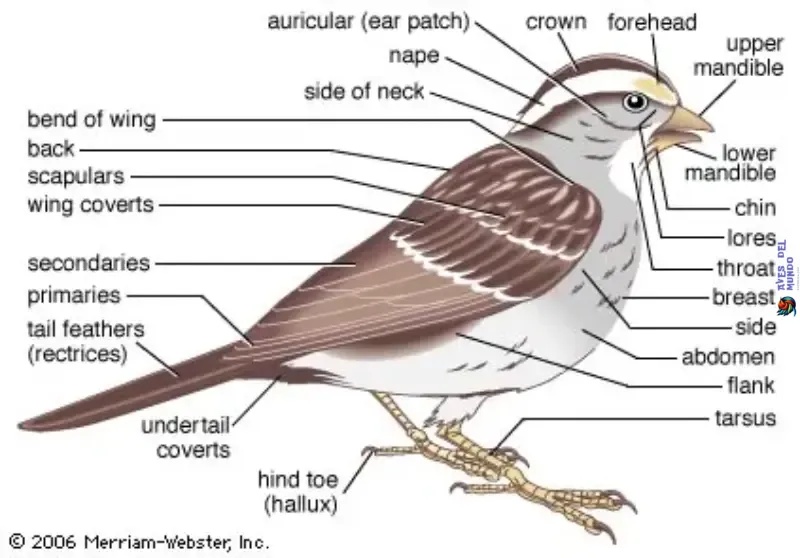
- Bill: The mouth part of a bird, used for feeding, grooming, and other activities.
- Crest: a prominent feature on the head of some birds; often used for display.
- Lores: The area between a bird’s eyes and the base of its beak.
- Plumage: all the feathers of a bird collectively.
- Talon – a sharp claw of a bird, especially a bird of prey.
- Webbing: skin between the toes of waterfowl, which helps them paddle through the water.
- Speculum: a patch of color, often iridescent, on the wings of certain birds.
- Eyering: a colored circle around a bird’s eye.
- Mandible: The upper and lower parts of a bird’s beak.
- Coverts: small feathers that cover the bases of larger flight feathers.
- Barbs: The individual strands that extend from the main shaft of a feather.
- Nape: the back of a bird’s neck.
Having immersed yourself in the physical lexicon of different birds, your ability to describe has expanded. As you continue your linguistic studies, use these terms to enrich your narratives and observations.
Bird Morphology: Examining Physical Features
Bird morphology encompasses the study of the physical features that distinguish avian species. Through their unique characteristics, birds are able to adapt to diverse environments and display remarkable abilities. Let’s explore some key rasgos de aves (bird features) and características de las aves (bird characteristics) that contribute to their survival and success.
Beak Shapes
The beak, also known as the bill, is a defining feature of birds. It is specially adapted to suit their specific dietary needs. Different beak shapes allow birds to consume a variety of foods, including fruits, seeds, insects, nectar, and even fish. Some notable beak shapes include:
- A long, thin beak for probing into flowers to access nectar, as seen in hummingbirds.
- A powerful, hooked beak for tearing flesh apart, as found in birds of prey like eagles and hawks.
- A broad beak with fine bristles, ideal for filtering tiny organisms from water, as observed in flamingos.
Wing Structures
The wings of birds are marvels of adaptation, enabling them to achieve impressive flight abilities. Wing structures vary among species and serve different purposes. Some common wing adaptations include:
- Long, narrow wings suitable for soaring effortlessly over long distances, such as those of albatrosses.
- Broad, rounded wings that provide lift and maneuverability, seen in most songbirds.
- Pointed wings, ideal for swift and agile flight, characteristic of species like swallows.
Feet Adaptations
Birds have evolved an array of feet adaptations that suit their unique lifestyles and habitats. These adaptations enable them to perch, swim, wade, grasp prey, or even climb trees. Some notable foot adaptations include:
- Perching feet with strong claws, allowing birds to grasp branches firmly, as seen in woodpeckers.
- Webbed feet for efficient swimming and diving, characteristic of water-dwelling birds like ducks and swans.
- Raptor feet with sharp talons, perfect for capturing and gripping prey, as exhibited by eagles and owls.
Bird morphology is a fascinating field of study that reveals the incredible diversity of avian adaptations. Through their rasgos de aves (bird features) and características de las aves (bird characteristics), birds continue to captivate researchers and enthusiasts alike.
Flight Patterns: Understanding Avian Flight
Birds possess an extraordinary ability to fly, which sets them apart from many other animals. Their flight patterns vary depending on their species and the behaviors they exhibit in the air. Understanding these flight patterns provides valuable insights into the comportamientos de las aves.
One of the most common flight patterns observed among birds is soaring. Soaring involves riding thermals, or columns of rising warm air, to gain altitude and conserve energy. It allows birds to cover large distances with minimal effort over extended periods. Raptors, such as eagles and hawks, are known for their exceptional soaring abilities.
In addition to soaring, many bird species have evolved an impressive technique called gliding. Gliding allows birds to travel through the air while descending gradually, using their outstretched wings to achieve lift and control their descent. Birds like gulls and albatrosses are skilled gliders, effortlessly navigating the ocean currents.
Hovering is another remarkable flight behavior exhibited by certain bird species. Hummingbirds, for example, are masters of hovering as they maintain a stationary position in the air by rapidly flapping their wings. This unique flight pattern enables them to feed on nectar from flowers with precision and grace.
«Flight is the epitome of freedom. Birds soaring through the sky evoke a sense of awe and wonder, reminding us of the boundless possibilities that exist in the natural world.» – John James Audubon
Each bird species has wings that are adapted to their specific flight behaviors. For instance, birds with long, broad wings are well-suited for soaring and gliding, allowing them to ride air currents effectively. On the other hand, birds with shorter, pointed wings are more agile in flight, enabling them to maneuver swiftly through dense vegetation or make sudden changes in direction.
Understanding the various flight patterns and wing adaptations of different bird species provides valuable insights into their behavior, ecology, and evolutionary history. It is truly awe-inspiring to witness the grace and versatility with which birds navigate the skies.

Next, we’ll explore another fascinating aspect of avian life: their vocalizations. Join us in Section 5 as we delve into the captivating songs and calls of birds and unravel the complex language they use to communicate.
Avian Vocalizations: Songs and Calls
Birds have a remarkable way of communicating through a diverse range of vocalizations. Their songs and calls serve different purposes, helping them establish territories, attract mates, warn of danger, and maintain social bonds.
Avian vocalizations vary greatly between species, with each having its unique repertoire and dialect. From the melodious melodies of songbirds to the haunting calls of raptors, these vocalizations showcase the rich behavioral and evolutionary adaptations of birds.
Some birds sing complex songs, which are often melodic and rhythmic musical performances. These songs can last for minutes or even hours, showcasing the intricate vocal abilities of these feathered creatures. Songbirds, such as the Nightingale (Luscinia megarhynchos), are renowned for their beautiful and intricate compositions.
On the other hand, calls are shorter, simpler vocalizations that birds use for immediate communication. Calls can serve various functions, including alarm calls to warn of predators, contact calls to communicate with others, and begging calls to solicit food from parents.
«The joyous chorus of birdsong at sunrise is one of nature’s most enchanting symphonies.»
Some Common Avian Vocalizations
- Alarm Calls: Birds have distinct calls to warn others about potential threats, such as predators or intruders.
- Territorial Songs: Many bird species sing to establish and defend their territories, warding off rivals and attracting mates.
- Mating Calls: During the breeding season, male birds sing complex songs to attract females and demonstrate their fitness.
- Flight Calls: Birds often vocalize while in flight, maintaining contact with their flock members and ensuring cohesion during migration.
- Parental Calls: Parent birds use specific calls to communicate with their offspring, guiding them and alerting them to food sources or potential danger.
By studying avian vocalizations, scientists gain insights into the behavior, social structures, and ecological interactions of bird species. These vocalizations are not only a beautiful symphony of nature but also provide valuable information about the complex world of birds.
| Bird Species | Main Vocalization |
|---|---|
| Common Nightingale | Melodious and intricate songs |
| Hooded Crow | Cawing and vocal mimicry |
| Bald Eagle | High-pitched whistling calls |
| African Grey Parrot | Imitative vocalizations and mimicry of human speech |
Feeding Habits: Dietary Preferences of Birds
Birds exhibit a wide range of feeding behaviors and dietary preferences. Their feeding habits are shaped by their beak designs, foraging techniques, and specific dietary adaptations that enable them to obtain food in their respective habitats.
One fascinating aspect of bird feeding behavior is the diversity of beak shapes and sizes. Different beak designs are specialized for specific feeding strategies. For example, a long and slender beak is ideal for probing deep into flowers to extract nectar, while a strong and sturdy beak is suited for cracking open tough nuts and seeds.
«
The shape and size of a bird’s beak are crucial in determining its dietary preferences.» – Dr. Emily Peterson, ornithologist
| Bird Species | Beak Design | Dietary Preferences |
|---|---|---|
| Hummingbird | Long, slender beak | Nectar, insects |
| Woodpecker | Strong, chisel-like beak | Insects, tree sap |
| Sparrow | Short, conical beak | Seeds, grains |
Aside from beak designs, birds also employ various foraging techniques to obtain food. Some species are skilled hunters, using their keen vision and agile flight to catch prey in the air or pounce on unsuspecting animals on the ground. Others are adept at scavenging, searching for carrion or leftover scraps.
«
Birds have evolved ingenious foraging techniques to maximize their chances of finding food.» – Dr. Sarah Roberts, behavioral ecologist
Additionally, birds have specific dietary adaptations that allow them to thrive in their habitats. For example, some species have specialized digestive systems that can break down seeds with tough outer shells. Others have unique anatomical features, such as elongated tongues, that enable them to extract insects from deep crevices.
«
By adapting their dietary preferences, birds can exploit available food resources and survive in diverse environments.» – Professor James Anderson, avian biologist
Understanding the feeding habits and dietary preferences of birds provides valuable insights into their ecology and evolutionary adaptations. It showcases the incredible diversity of avian species and the remarkable ways in which they have adapted to their respective niches.
Key Takeaways:
- Birds exhibit a wide range of feeding behaviors and dietary preferences.
- Beak designs are specialized for specific feeding strategies.
- Foraging techniques vary among bird species.
- Dietary adaptations enable birds to thrive in their habitats.
Nesting Behaviors: Avian Reproduction
When it comes to reproduction, birds exhibit fascinating nesting behaviors. Various species have developed unique strategies to ensure the survival of their offspring. Let’s explore some of these nesting behaviors, mating rituals, and parental care exhibited by different bird species.
1. Nesting Strategies
Birds employ diverse nesting strategies, depending on their habitat and evolutionary adaptations. Some birds build intricate nests using twigs, leaves, and other materials, while others excavate holes in trees or use existing cavities. Certain species construct floating nests on water bodies, and a few even create stunning structures like bowerbirds, incorporating colorful decorations to attract mates.
Here’s an example of a bird species with unique nesting behavior:
The baya weaver bird, found in South Asia, constructs elaborate hanging nests using grasses and twigs. The male weaver weaves these nests, showcasing its exceptional craftsmanship to attract female partners.
2. Mating Rituals
Mating rituals in birds can involve impressive displays of courtship behaviors performed by males to attract females. These rituals often include intricate dances, aerial displays, vocalizations, and displays of vibrant plumage. Each species has its own unique courtship rituals, reflecting the diversity and complexity of avian behaviors.
Consider the courtship ritual of the sage grouse as an example:
Male sage grouse gather in specific areas called leks, where they engage in elaborate displays that feature inflated air sacs, vigorous wingbeats, and enchanting vocalizations. This visually stunning performance aims to impress potential mates and secure breeding opportunities.
3. Parental Care
Once offspring are produced, birds exhibit various levels of parental care to ensure their survival. Some bird species demonstrate collaborative parenting, with both parents actively participating in incubating eggs, feeding the chicks, and protecting the nest from predators. Other species, like some waterfowl, rely on the female alone to incubate the eggs and care for the young.
Let’s look at an example of avian parental care:
Emperor penguins, known for their remarkable breeding behaviors, demonstrate one of the most extreme forms of avian parental care. After the female lays a single egg, she transfers it to the male, who incubates it by balancing it on his feet and keeping it warm under a brooding pouch. Meanwhile, the female heads to the ocean to replenish her energy reserves. Once the chick hatches, both parents take turns feeding and protecting it until it can fend for itself.
Please refer to the table below for a summary of nesting behaviors, mating rituals, and parental care in different bird species:
| Nesting Behavior | Mating Rituals | Parental Care |
|---|---|---|
| Building intricate nests using twigs, leaves, and materials | Intricate dances, aerial displays, vocalizations | Collaborative parenting with both parents actively participating |
| Excavating holes in trees or using existing cavities | Displays of vibrant plumage | Female incubates eggs and cares for young |
| Constructing floating nests on water bodies | Enchanting courtship dances | Male builds nest, female lays eggs, and both parents care for young |
| Creating elaborate structures with colorful decorations | Inflated air sacs, vigorous wingbeats | Extreme parental care with male incubating the eggs |
Understanding avian nesting behaviors provides valuable insights into the diverse strategies employed by birds to reproduce and ensure the survival of their species. These behaviors highlight the remarkable adaptability and complexity of avian life.
Migration: Incredible Avian Journeys
Migration is a truly remarkable behavior exhibited by many bird species. Every year, these feathered creatures embark on incredible journeys across vast distances, defying the limitations of their small bodies. Understanding the reasons behind bird migration, the routes they take, and the adaptations that enable their survival during these long journeys is both fascinating and awe-inspiring.
For birds, migration serves various purposes, including accessing abundant food sources, suitable breeding grounds, and favorable climate conditions. As seasons change, some species have evolved the instinct to migrate in search of better opportunities. These arduous journeys require immense physical endurance and navigational skills.
The routes taken by migratory birds can span thousands of miles and often traverse continents, oceans, and diverse landscapes. Some embark on perilous journeys, crossing treacherous landscapes and facing the dangers of predators and inclement weather.
During their long flights, birds rely on a variety of adaptations to navigate and survive. One such adaptation is their ability to use celestial cues, such as the position of the sun and stars, to orient themselves. Others rely on landmarks, such as coastlines or mountain ranges, to guide their paths. Some birds even possess a magnetic sense, allowing them to detect the Earth’s magnetic field and use it to navigate.
«Birds are incredible navigators. They utilize a combination of internal compasses, celestial cues, and environmental signals to guide them on their migratory journeys, covering awe-inspiring distances.»
Additionally, birds must conserve energy during their long flights, as they often fly for days or even weeks without resting. Some species, like the Arctic Tern, undertake the longest migrations, traveling from the Arctic to the Antarctic and back each year. These birds have developed efficient flight techniques, such as soaring on air currents and utilizing tailwinds, to minimize energy expenditure.
Migration plays a crucial role in the survival and population dynamics of bird species. It allows them to access resources and habitats that may not be available year-round, facilitating breeding, foraging, and ultimately, the continuation of their species.
| Species | Migration Route | Distance Traveled |
|---|---|---|
| Arctic Tern | Arctic – Antarctic | 44,000 miles (71,000 km) |
| Bar-tailed Godwit | Alaska – New Zealand | 7,100 miles (11,400 km) |
| Ruby-throated Hummingbird | Eastern US – Central America | 1,600 miles (2,575 km) |
The table above showcases just a few examples of the remarkable journeys undertaken by migratory bird species. It highlights their range of migration routes and the incredible distances they cover.
Studying avian migration provides valuable insights into the behavior and adaptability of birds. It also underscores the interconnectedness and resilience of the natural world. The ability of these tiny creatures to navigate across vast distances is a testament to their remarkable instinct and innate knowledge of the Earth’s rhythms.
Avian Intelligence: Cognitive Abilities of Birds
Birds are not only known for their beautiful plumage and melodious songs but also for their surprising intelligence. Extensive research has revealed that these feathered creatures possess remarkable cognitive abilities, challenging the notion that intelligence is solely limited to mammals. From problem-solving skills to tool usage and social behaviors, birds continue to fascinate scientists and enthusiasts alike.
«Birds have shown incredible problem-solving abilities, often using tools to access food sources or build intricate nests. These cognitive feats showcase their adaptability and intelligence in navigating their environment.»
One of the most famous examples of avian problem-solving involves New Caledonian crows, known for their ingenious tool usage. These birds fashion sticks into hooks to extract insects from tree trunks, demonstrating their ability to devise and employ tools for specific tasks. It’s truly astonishing to witness their cognitive prowess in action.
Tool Usage in Birds:
While the use of tools is commonly associated with primates, various bird species have been observed exhibiting this behavior as well. Alongside the New Caledonian crows, several others have shown remarkable tool usage:
- The Black-breasted Buzzard, found in Australia, uses rocks to crack open eggs.
- The Egyptian Vulture uses stones to break the shells of ostrich eggs.
- The Green Heron uses bait, such as insects or feathers, to attract fish.
These examples highlight how birds have adapted and developed unique strategies to overcome challenges and secure their survival.
Social Behaviors in Birds:
Birds also exhibit complex social behaviors, including communication, cooperation, and altruism. Many species display remarkable teamwork when foraging, hunting, or defending their territory. Take, for instance, the African hunting dogs, which engage in coordinated group movements during hunts, ensuring a higher success rate.
Moreover, certain bird species display altruistic behaviors towards kin and unrelated individuals. They share resources, provide protection, and cooperate in various activities. This social complexity showcases the depth of their cognitive abilities and their understanding of social dynamics.
Bird Camouflage: Survival Through Adaptation
One of the fascinating aspects of bird behavior is their remarkable ability to blend into their environments through camouflage adaptations. These adaptations serve as a crucial survival strategy for many bird species, allowing them to evade predators and successfully hunt for prey.
The different forms of bird camouflage are truly remarkable. Some birds have evolved feather patterns and colors that closely mimic their surrounding habitats, such as tree bark or leafy foliage. This enables them to become nearly invisible to both predators and unsuspecting prey.
Other birds have developed unique physical features that aid in camouflage. For example, the American bittern has a long, slender neck and body shape that resembles the reeds and grasses among which it resides. When standing motionless, this bird becomes virtually indistinguishable from its surroundings, making it incredibly difficult for predators to spot.
Camouflage adaptations can also extend beyond physical appearance. In some cases, birds are able to mimic the sounds of their environment, further enhancing their camouflage and making it challenging for predators to locate them.
It is important to note that the effectiveness of bird camouflage may vary depending on factors such as the time of year, climate, and specific habitat characteristics. Some species may even undergo seasonal molts to change their plumage and adapt to different environments as they migrate.
Overall, bird camouflage is a remarkable testament to the adaptability and ingenuity of nature. It allows birds to not only survive but thrive in their respective habitats by minimizing their visibility and maximizing their chances of successfully hunting and reproducing.
Avian Courtship Displays: Intricate Breeding Rituals
Birds exhibit mesmerizing courtship displays as part of their mating rituals. These complex behaviors are designed to attract potential mates and establish breeding relationships. Courtship displays vary greatly among bird species, showcasing unique behaviors and plumage displays that highlight their individuality and beauty.
One example of an intricate courtship display is performed by the male Bird-of-Paradise. With flamboyant plumage, he engages in an elaborate dance, showcasing his vibrant colors and distinctive feathers. His movements are accompanied by melodious songs, creating a mesmerizing spectacle that captivates potential mates.
«Bird courtship displays are nature’s equivalent of an enchanting ballet. Each species has its own choreography, with males showcasing their best qualities to stand out from the crowd and win the heart of a female.»
Another captivating courtship behavior is observed in the Great Blue Heron. These majestic birds engage in an elegant courtship dance, where they extend their wings, puff up their feathers, and gracefully weave in synchronized movements. This visually stunning display demonstrates their strength and agility, leaving observers in awe of their beauty.
Some bird species rely on colorful plumage to attract mates during courtship. The male peacock’s elaborate tail feathers, with their iridescent blue and green hues, are a prime example of this. Displaying their tail feathers in a vibrant fan shape, male peacocks create a visually striking spectacle that serves to entice female peahens.
Bird courtship displays often involve territorial behaviors as well. Males may defend specific areas within their habitat to attract females and assert their dominance over competing males. These displays can range from vocal calls and belligerent posturing to aerial acrobatics, all aimed at impressing potential mates and securing breeding opportunities.
«Avian courtship displays are a testament to the incredible diversity and adaptability of bird species. From intricate dances to vibrant feather displays, these behaviors showcase the sheer beauty and complexity of the natural world.»
Through courtship displays, birds demonstrate their genetic fitness, communicate their availability, and establish strong bonds with potential mates. These rituals play a vital role in maintaining healthy bird populations and ensuring the continuation of their species.
Next, we’ll explore the fascinating world of endangered bird species, shedding light on the threats they face and the efforts being made to preserve their existence.

Endangered Species: Understanding Threats to Avian Populations
Birds, with their diverse species and unique characteristics, are facing a grim reality – the threat of extinction. Numerous factors contribute to the decline of different bird species, putting their populations at risk.
One of the primary threats to avian populations is habitat loss. As human activities continue to encroach upon natural habitats, crucial nesting areas, feeding grounds, and migratory routes are destroyed or altered. This disruption greatly impacts the survival and reproductive success of various bird species.
Another significant factor contributing to the endangerment of bird species is climate change. Rising temperatures, habitat disruption, and altered weather patterns can disrupt the delicate balance necessary for the survival of different avian populations. This results in habitat fragmentation, reduced food availability, and increased vulnerability to diseases.
Conservation efforts are essential for safeguarding these diverse bird species. It requires the collaboration of governments, organizations, and individuals to enact policies and initiatives that protect bird habitats, restore degraded areas, and promote sustainable practices. By preserving their habitats and addressing the threats they face, we can hope to prevent the loss of these beautiful and valuable members of our ecosystem.»


